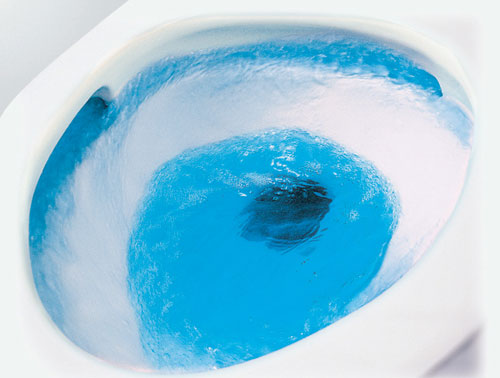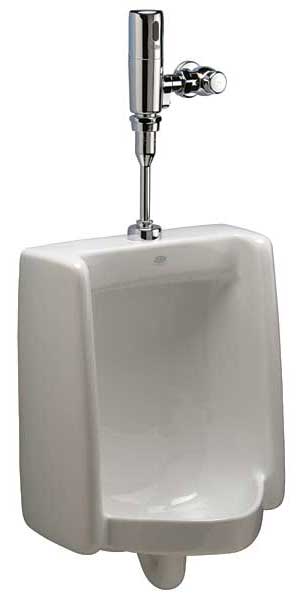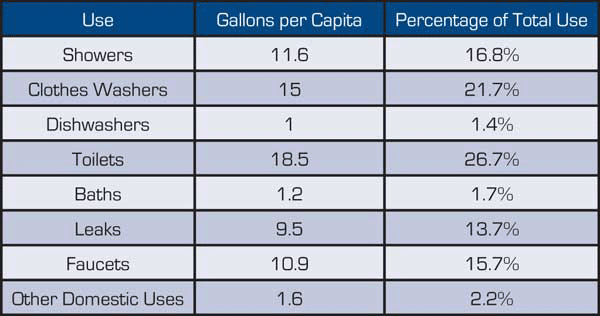Conserving Water for a Thirsty Planet
In 1992, The Energy Policy Act (EPACT) required manufacturers to apply a 1.6 gpf standard to all new toilets as predicted by Gunnar Baldwin. As the new toilets were installed into older buildings, some problems began to surface. Plumbers found they needed to calculate the slope of the existing plumbing lines and in some cases, the size of the waste line. The first versions of these toilets were often manufactured or tested by two entities and in many cases the flush mechanism did not work well within the fixture design.
According to Gunnar Baldwin, the first real breakthrough, since the toilet was invented, occurred in the 1990's when "the first bowls were designed by computer modeling, which optimized the hydraulic capacity." Some of the new technologies included new trapways, an increased flow rate from the tank to the bowl and an understanding of the frictional coefficient of the walls of the bowls. In addition, new certification testing was required by WaterSense and the EPA.
Building rating systems soon required even higher water performance from waste fixtures. For example, LEED® the USGBC rating system for Homes requires that all toilets exceed the EPACT baseline by 20 percent or more. A major tool for the reduction of potable water, HET's or High-efficiency Toilets should:
- Flush at 1.28 gpf or less.
- Meet the EPA WaterSense Label
- Certified by a third party testing agency
- Require minimal cleaning with enironmentally unfriendly detergents
- Flush quietly
- Meet universal design standards
The Maximum Performance (MaP) Testing program was developed in Canada to provide a standard for toilet performance. This test reviews the grade of the toilet flap as well as the combination of fixture to flushing mechanism as a whole system. MaP tests also involve the use of real fecal waste and are the standard for good toilet performance.
 |
This high-efficiency toilet flushes at 1.28 gallons per flush (gpf). Photo courtesy of TOTO USA |
Â
There are composting toilets, and dual-flush toilets. Water specialists are quick to remind professionals that volume is measured as a multiple of rate X time. Toilets can still save water by reducing the length of time the water flushes at a larger volume. The advantage of a dual flush toilet is that it allows the user to select a lower flush volume for liquids versus a larger flush volume for waste. In the future, toilets may flush using a vaccum to go below one gallon per flush, however, plumbers may need to design periodic flush rinses to clear lines. New pressure assisted toilets also use less water, but are currently a noisy option. Another new water saving water closet has been designed primarily for use in assisted living facilities. This unit reduces the use of toilet paper as well as water, combining a full seat wash with a drying element using electronic components. Some new fixtures have advanced glazes which provide micro-bacterial resistance and increase the removal of effluent with less water wash.
Gunnar Baldwin notes, too, that "recycling toilets are already occuring in China, Northern Europe and India that will separate solids from liquids, and store the liquids long enough so that they become sterile for agriculture as fertilizer."
Urinals
 |
This new urinal is engineered to use only 16 ounces of water per flush and is designed with pressure-compensating valves, making it ideal for retrofits. Photo courtesy of Zurn Engineered Water Solutions |
At the University of Nebraska, College of Architecture, the Hinsdale urinal is celebrated in a yearly ceremony at Halloween time. Patented by Winfield E. Hinsdale on November 1, 1901, these urinals were installed in the 1890's and relocated in 1985 when the Architecture School was renovated. According to AIAS students, these urinals, decorated with inscriptions are some of the largest urinals west of the Mississippi.6 Early urinals like the Hinsdale were not water savers.
Sean Martin believes that the "silver bullet" to eliminating a large amount of water waste, particularly in a commercial setting, is low flow urinals- specifically the latest 1-pint per flush consumption urinals. These low consumption urinals provide 88 percent water reduction per flush vs. the EPA baseline of 1.0 gpf. A lot of attention has been paid to urinal design. Many professionals initially embraced the waterless urinal technology to meet LEED® standards, only to find that there have been problems with consumer acceptance and maintenance. The EPA is currently developing a new low flow urinal standard expected release later this year.
According to the EPA, nearly 80 percent of the urinals in use today, approximately 9.6 million fixtures, currently exceed the maximum allowable flush volume set by federal standards. Replacing these fixtures can save between 1 and 4.5 gallons per flush (gpf). New high-efficiency flushing urinals fixtures and flushometer valves bearing the WaterSense label will use no more than 0.5 gpf at least 50 percent less water than standard flushing urinals.7
The new standard is expected to test for trap seal restoration, flush effectiveness and will replace the current standard of 1.5 gpf of most urinals. Some of the problems with low flush or waterless urinals such as line calcification may need to be resolved by allowing for periodic flush rinses or trap exchanges. Although a common maintenance practice, it is not necessarily a good environmental option to use an acid wash to clear low flow or waterless urinals of bacteria.
Â










